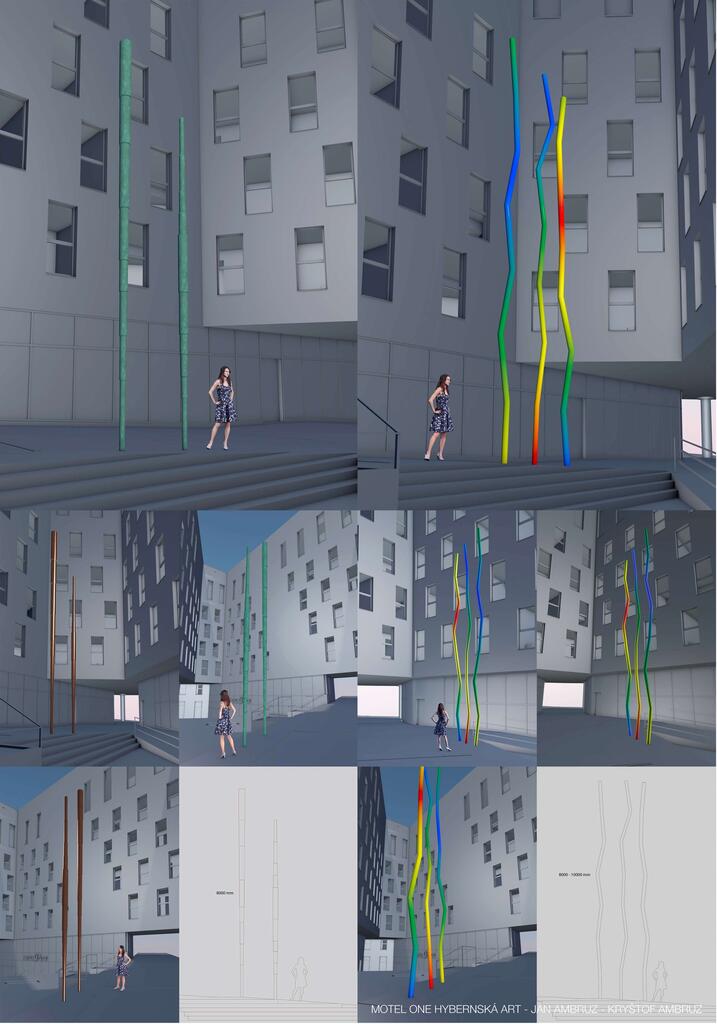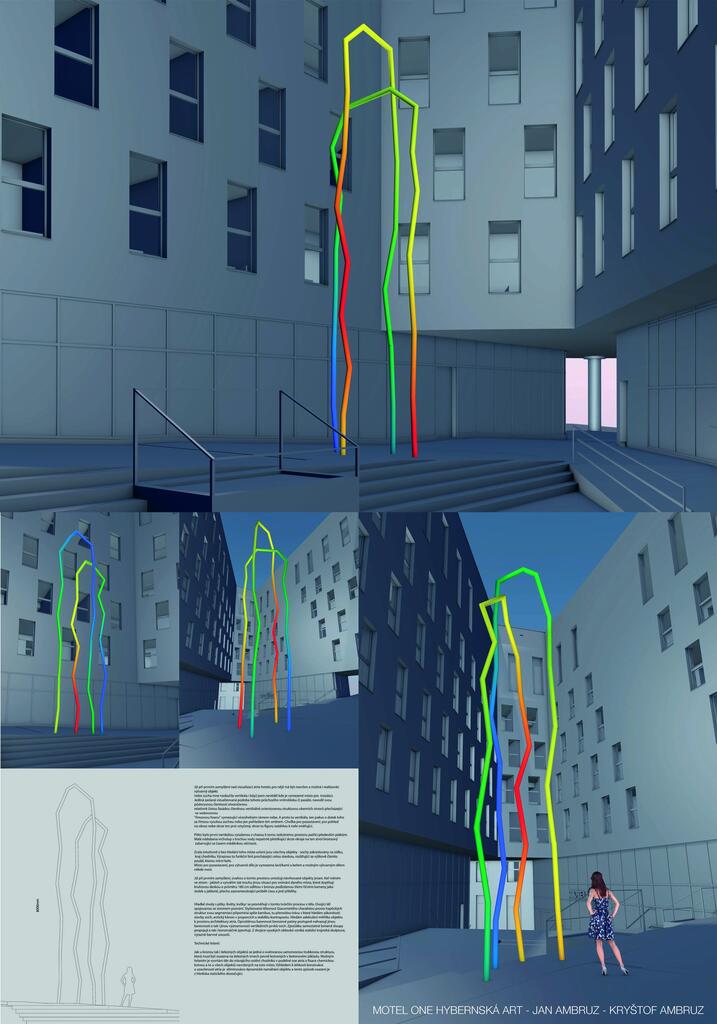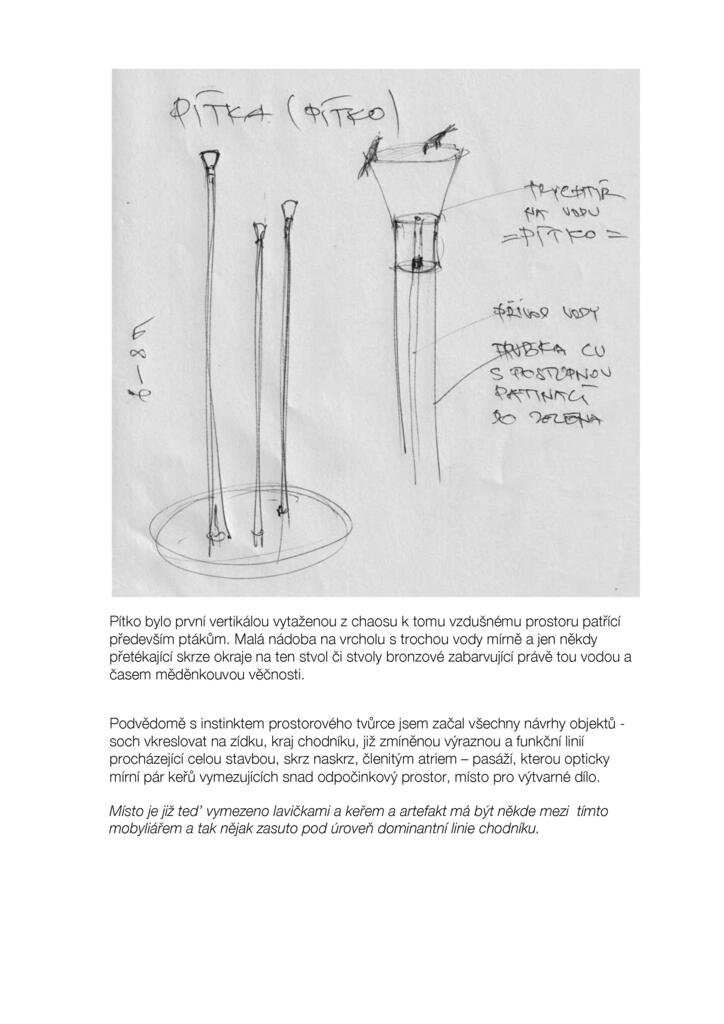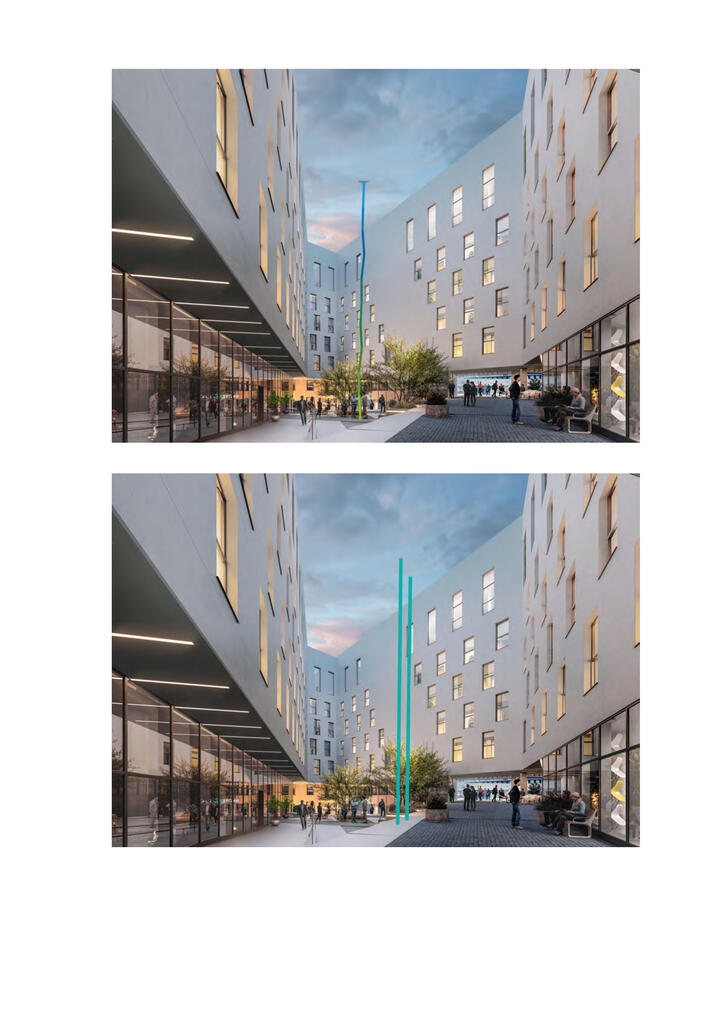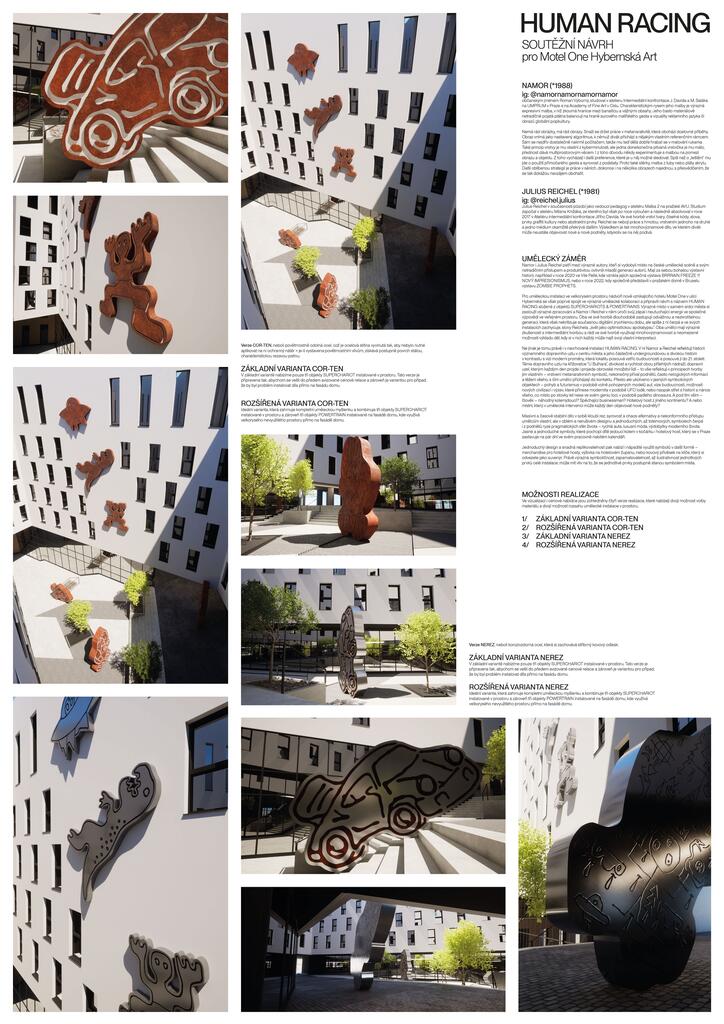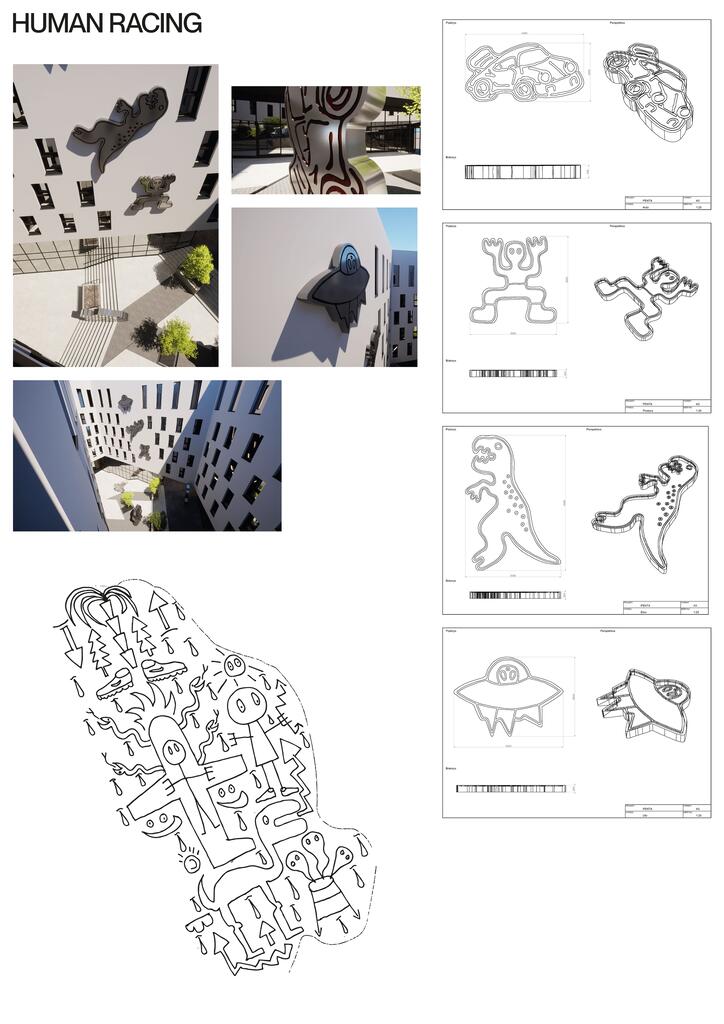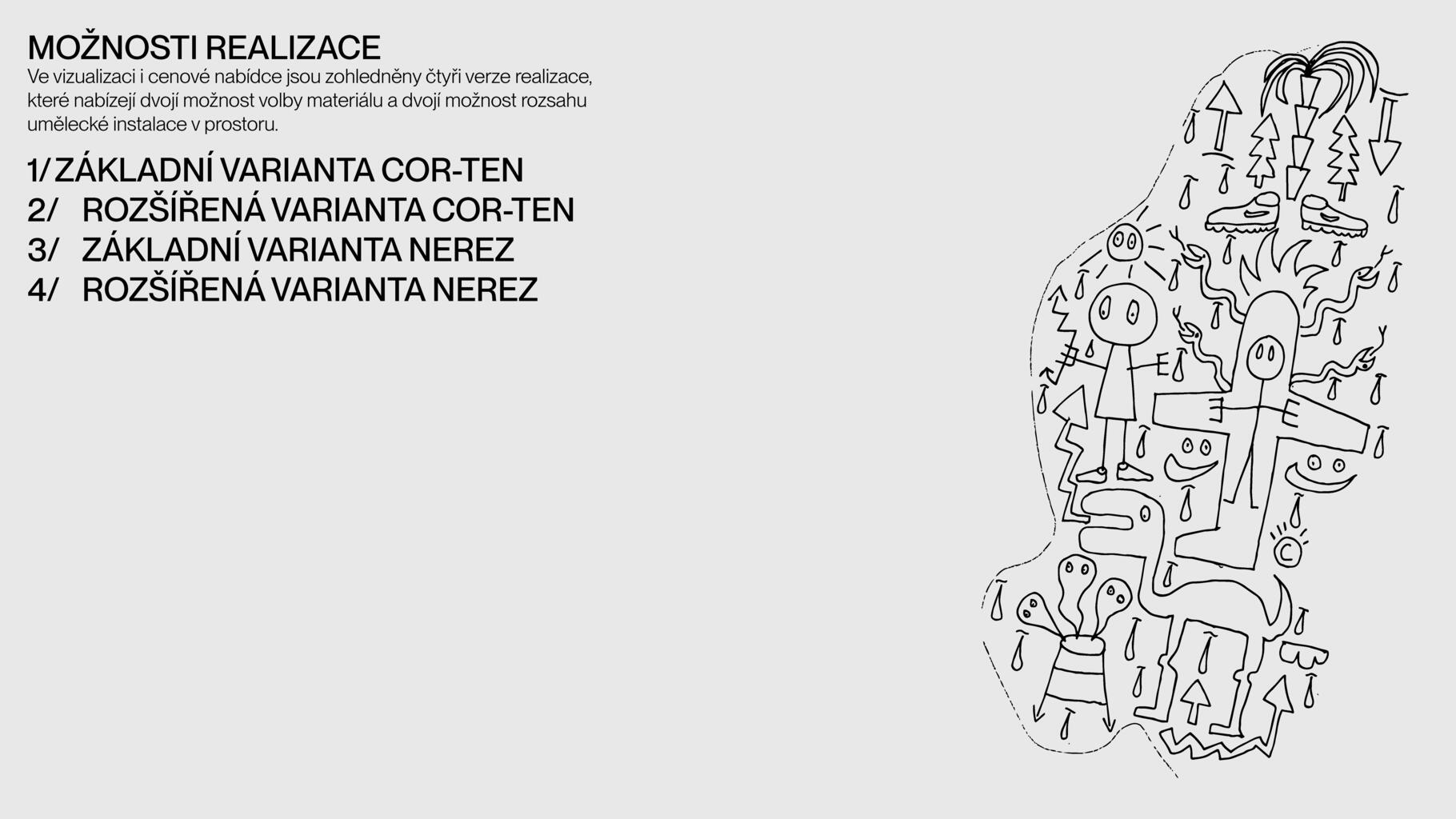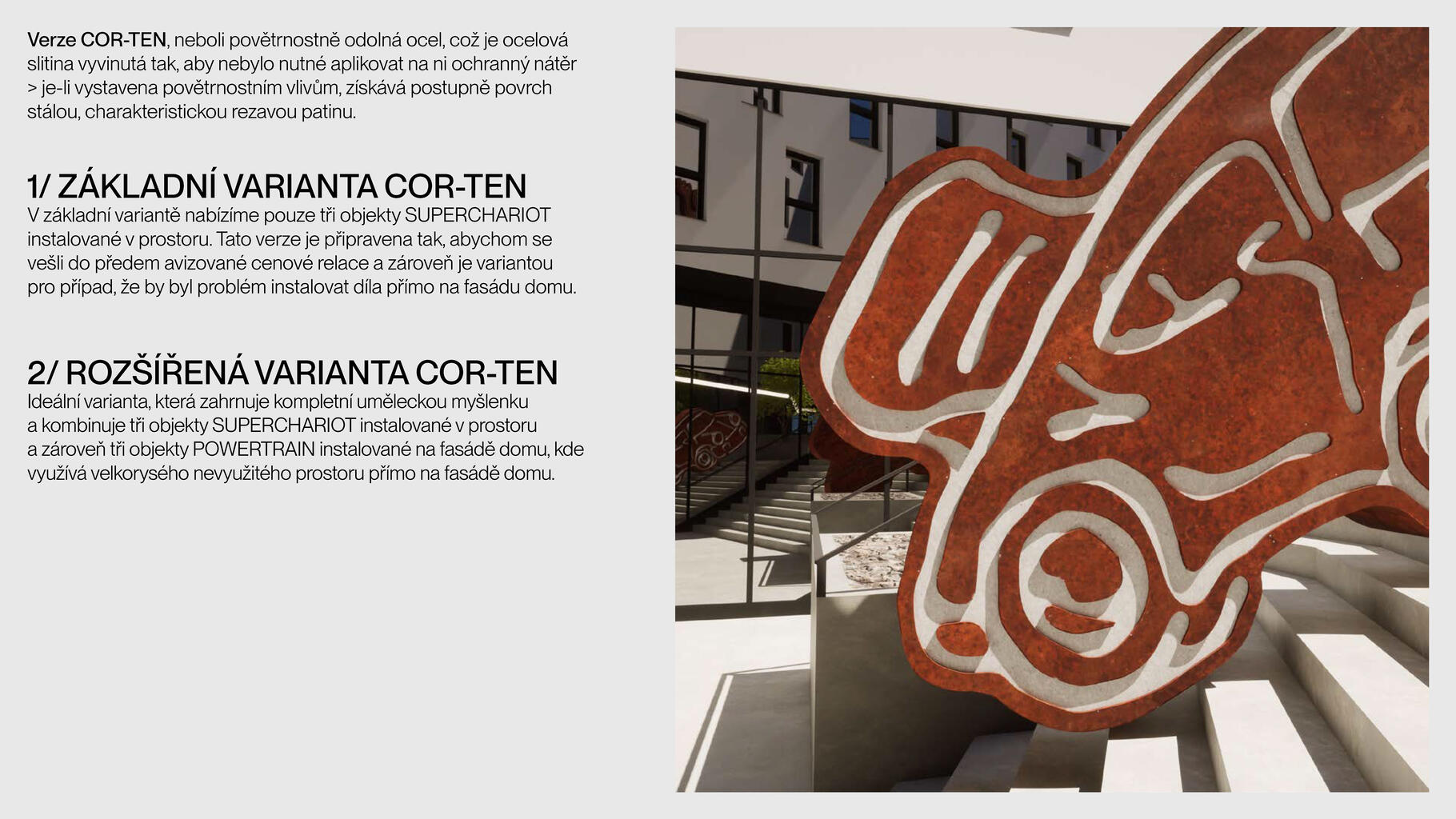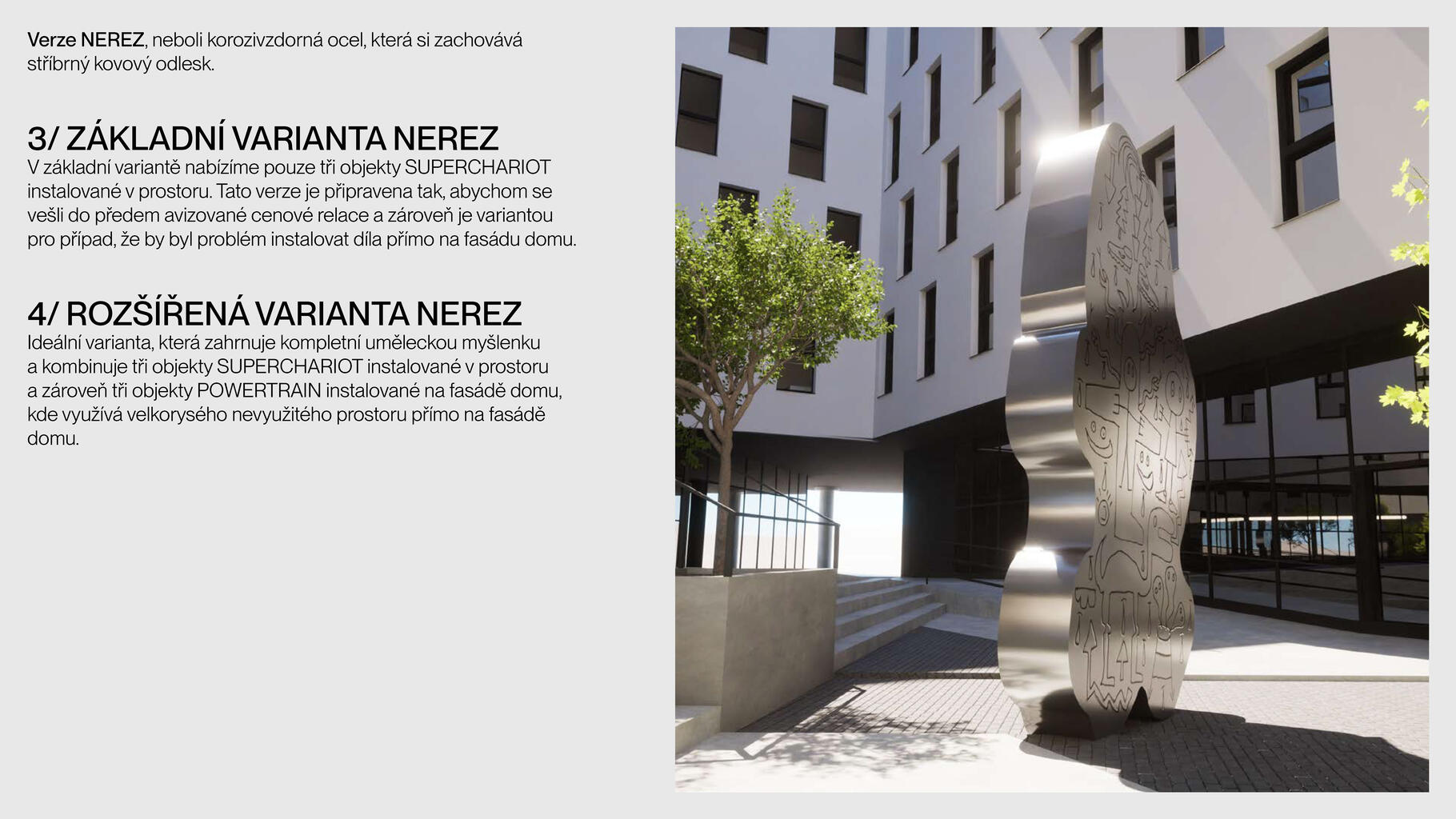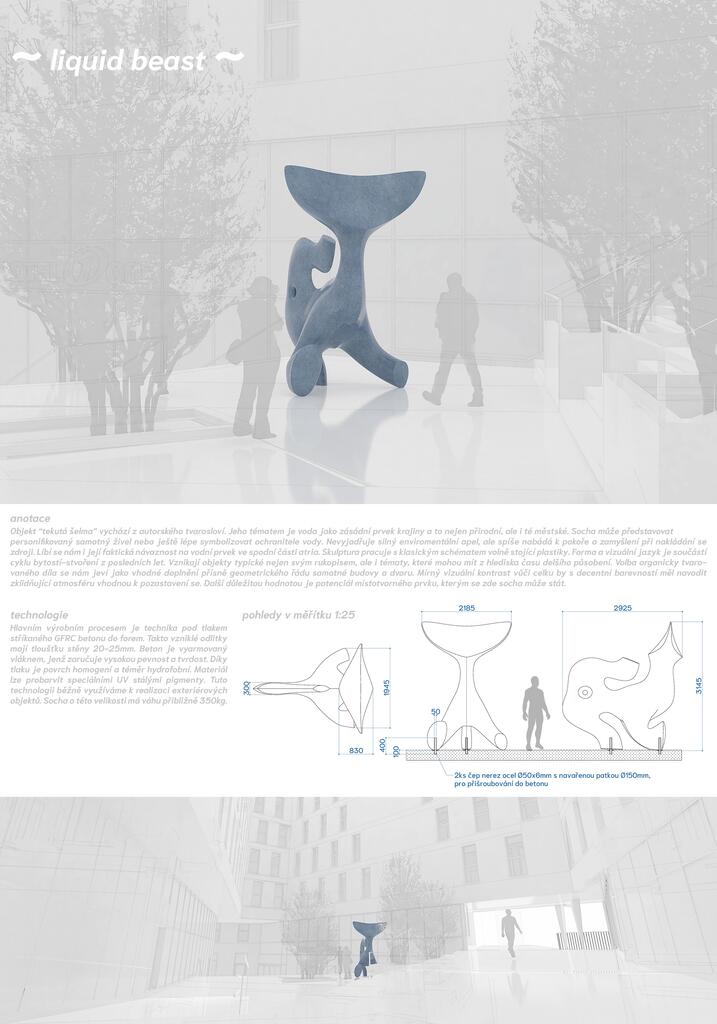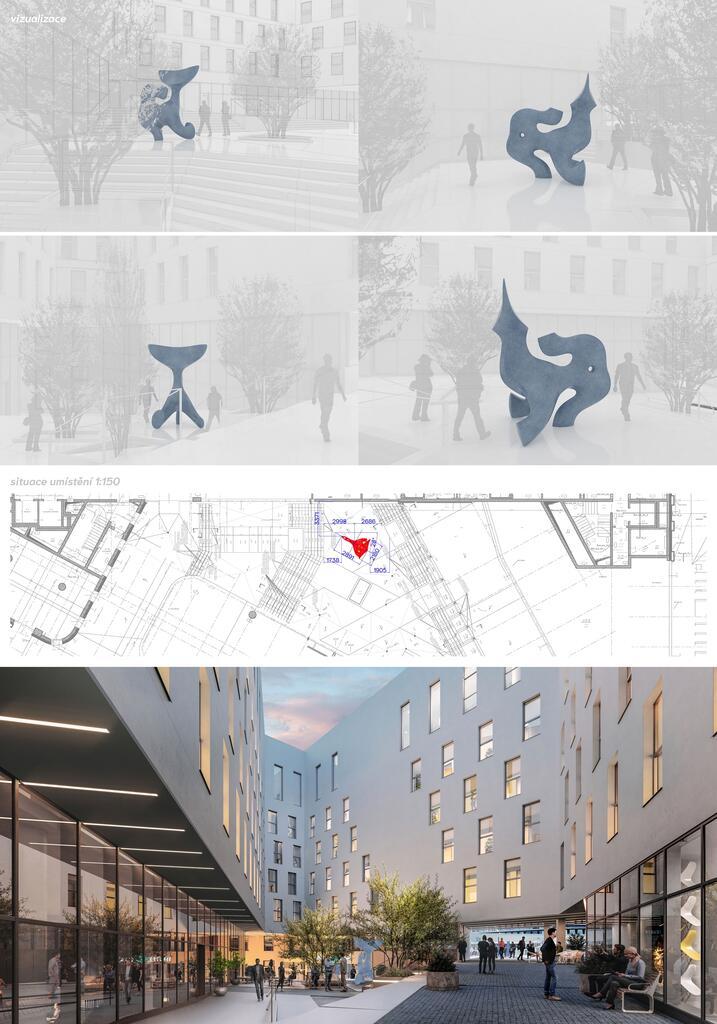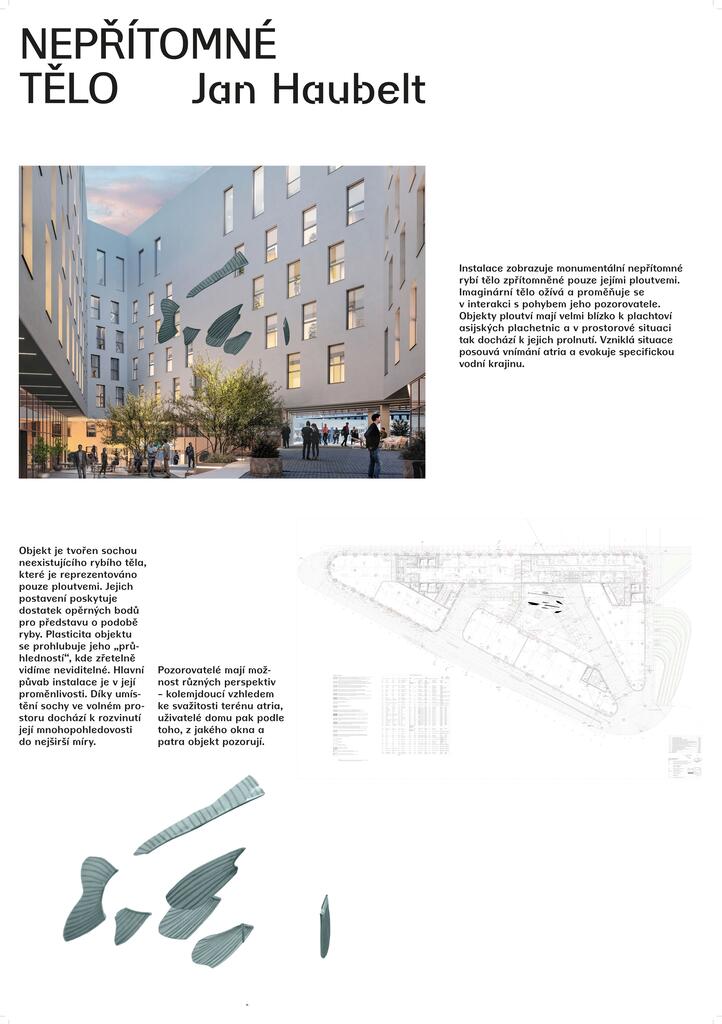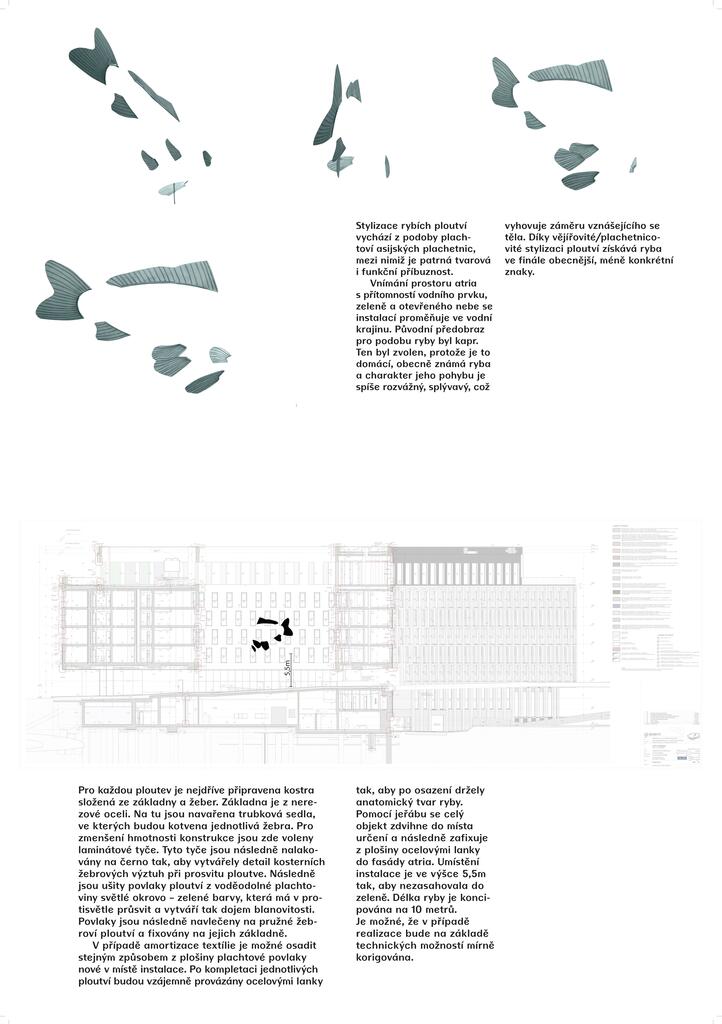Annotation
For the artistic installation in the generous courtyard space of the newly developed Motel One hotel on Hybernská Street, the artists joined forces for the first time in a bold artistic collaboration, presenting a proposal titled HUMAN RACING, composed of the objects SUPERCHARIOTS & POWERTRAINS. A striking location in the heart of the city deserves a striking artistic approach—and both Namor and Reichel bring their passion and relentless energy into a shared statement in public space.
In their work, both artists have long represented a bold and untamed generation—one that doesn’t criticize the current fast-paced digital age but draws from it and, as Reichel puts it, captures “the world as an optimistic apocalypse.” Both have strong experience in intermedia art and often embrace ambiguity and the open-ended nature of interpretation, allowing each viewer to find their meaning within the work.
The same applies to their proposed installation, HUMAN RACING. Here, Namor and Reichel reflect on the history of this key transportation hub in the center of Prague—a place with a partially underground, wild past—now undergoing a transformation that pushes it into the 21st century. The theme of the transport junction at the "U Bulhara" crossroads, the chaos and speed of the surrounding train stations, and the sheer number of people who pass through daily—all are reflected in the artists' characteristic creative process: layering meta-narrative symbols, an endless stream of stimuli, often illogical information, and mining from everything they come into contact with.
Yet, the work remains anchored in clear symbolic objects—movement and futurism are evoked through casually placed car models, a vision of the future and possible new civilizations (and challenges of modernity) appears as a UFO ship. At the same time, the confrontation with history and the weight of the site's centuries-old spirit is embodied by a fallen dinosaur. And beneath all that—humans. A random passerby? A rushing businessman? A hotel guest from another continent? Or a local who can discover new meanings in the artistic intervention daily?
The massive and time-resistant work combines rust, rawness, and the chaos of an alternative, nonconformist artistic approach. At the same time, its smooth, non-disruptive design and simple, almost totemic symbols also draw from purely pragmatic aspects of life—fast cars, luxury fashion, and the achievements of modern living. These are clear, accessible symbols that can be understood by a child passing by in a stroller and a hotel guest in Prague for just a few days on a packed business schedule.
The simple design and easy replicability also offer imaginative potential for other uses—hotel merchandise, embroidery on a bathrobe, or a metal keychain souvenir to take home. The strong symbolism, memorability, and even illustrative ness of the installation’s individual elements may eventually allow them to become icons of the location itself.
